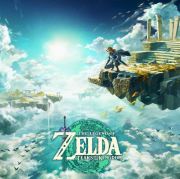The Legend of Zelda: Tears of the Kingdom Review
A smart sequel that improves upon a modern classic
What can I even say about The Legend of Zelda at this point? Nintendo's long-running franchise has consistently wowed critics and audiences alike for the last 30+ years. You could easily make the case for it being the most consistently great series in the history of the medium. Even with all the praise it has received, though, the response to Breath of the Wild was staggering. A magnum opus of open-world adventure, the Nintendo Switch launch title has earned its place among the all-time greats. Perhaps the rapturous applause is what made Nintendo decide to do something different for the next release, The Legend of Zelda: Tears of the Kingdom. Rather than completely eschew the prior release, as is par for the series, the latest entry instead serves as a direct follow-up.
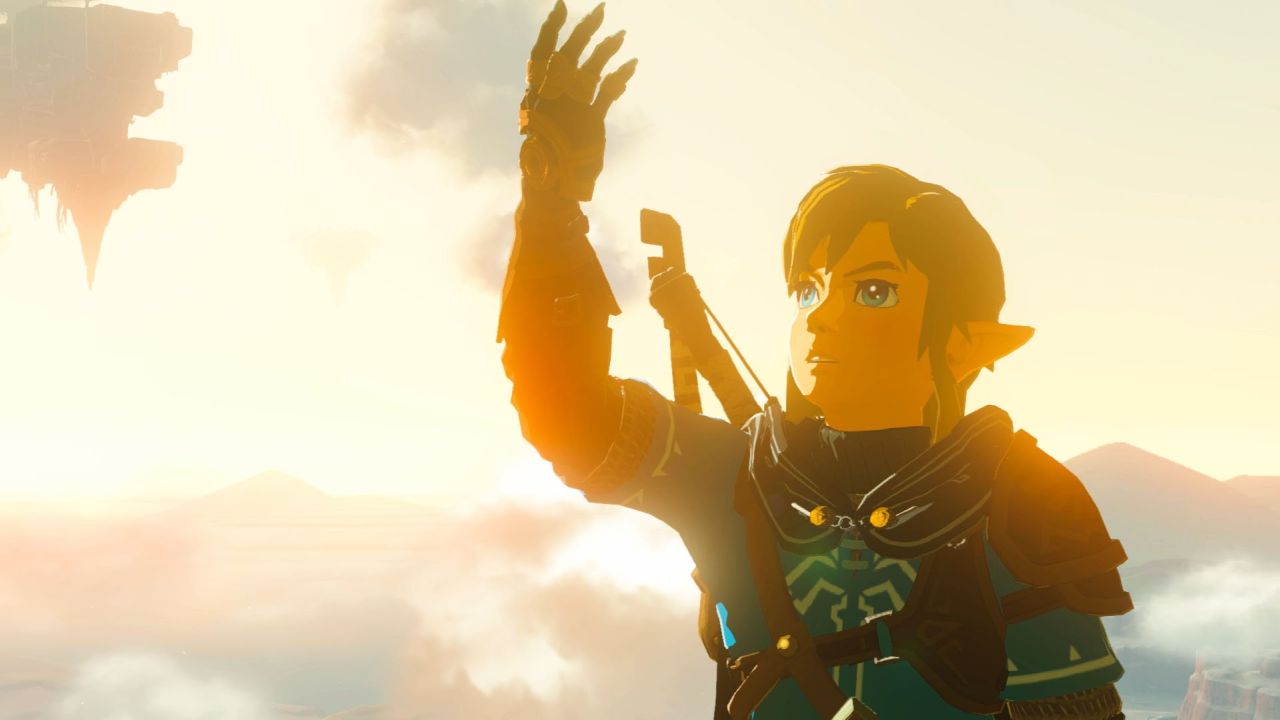
Taking place following the defeat of Calamity Ganon, Tears of the Kingdom begins with Zelda and Link investigating a cavern below Hyrule Castle. In that cavern is a goopy, damaging substance that comes to be known as Gloom. Also underneath the castle is the decrepit body of Ganondorf, which unfortunately happens to be springing back to life right as you come across it. Upon awakening, Ganondorf destroys the Master Sword, mangles Link's arm and casts Zelda off to parts unknown. Although his arm may have been wrecked, it is soon replaced by the arm of Rauru, who is a member of the Zonai who had been keeping the evil being at bay. This incident has caused more than just damage to Link, though, as Hyrule has been devastated by what is referred to as the Upheaval from the locals. With the Demon King back in power, it is up to Link to not only find Zelda, but to also locate the successors of the Sages who originally defeated Ganondorf and convince them to pick up arms and join you in battle.
Like with a lot of Nintendo's main franchises, the story and lore of Zelda has always been the least important part of the package for me. That's not to say that they have been bad, but rather that they have been kind of just there. Tears of the Kingdom is mostly more of the same in my opinion, but it does have more flavor to it. Without getting too much into spoilers, I like what they do with Zelda in this entry. She's kind of off doing her own thing while Link and others search for her following the Upheaval. Through her eyes, we get a deeper glimpse into the history of Hyrule, and how Ganondorf had been beaten back in the past. Link is still a frustrating blank slate of a man, but the greater focus on the other pivotal characters makes this one of the stronger entries from a storytelling perspective.
Rauru's emergency arm is not just a basic replacement for Link, though. It is the catalyst for unlocking a whole new wealth of abilities for our hero. There are five new abilities to wield, and each one of them has a role in combat, exploration, puzzle solving, or all three. Four of them are received in the title's sprawling tutorial area, and the last one can be unlocked after completing some early quests. Once you get familiar enough, you'll find that there are countless ways to use them to solve the many problems the title throws at you.
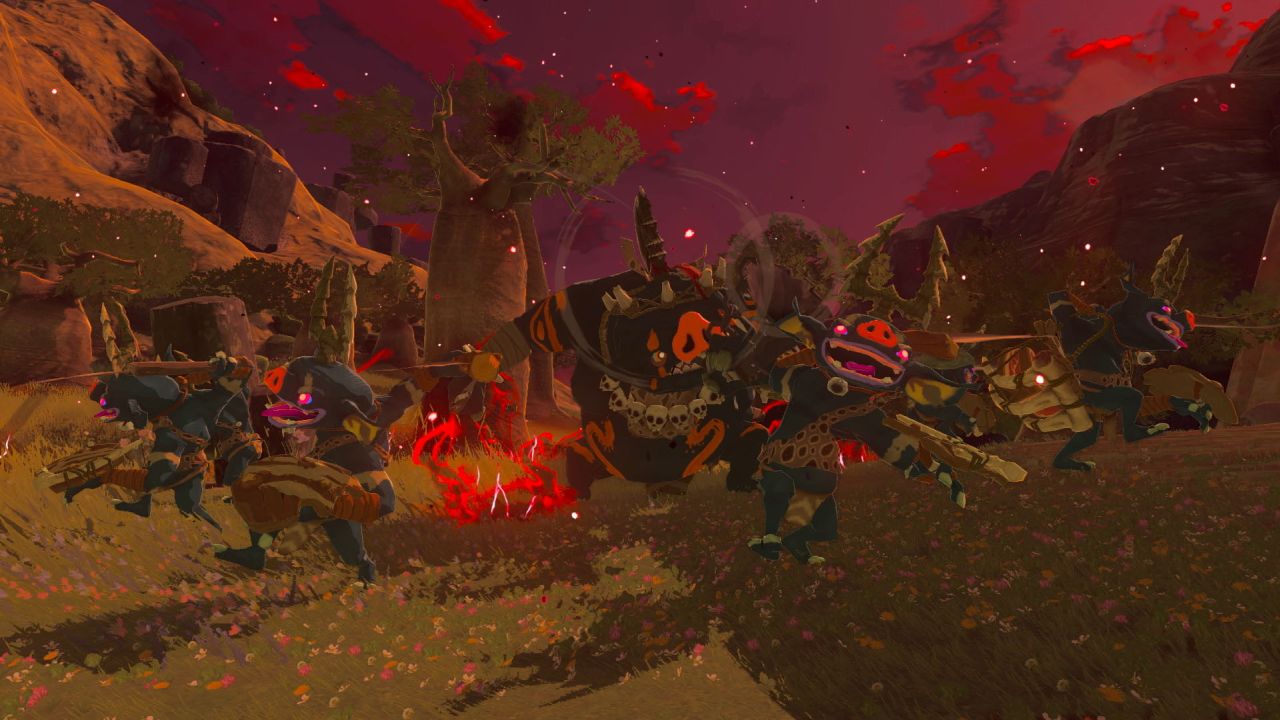
The first one you gain access to, and the most enjoyable to me, is Ultrahand. Ultrahand essentially allows you to grab almost any object you find lying around and manipulate it to serve your ends. Typically, this will lead to you sticking items together to form some sort of contraption. It could be something as simple as gluing some poles to a ball, so it rolls along a track, or something more complicated such as piecing together a full-fledged vehicle. Although, whether it's with the Pro Controller or Joy-Cons, it can feel a little clumsy maneuvering an object. You can toggle between moving and rotating whatever you are holding with the press of a button, but it can take some time to get it set where you want it. To power some of the more complex creations, you'll need to utilize Zonai devices. Zonai devices are ancient pieces of technology that can serve numerous purposes and rely on battery power. The first batch you come across are simple such as fans and pots, but eventually you'll find things such as stabilizers and steering sticks that really open up the title's creative side.
If Ultrahand is the main tool for exploration, then Fuse is the difference maker when it comes to combat. Separate from how Ultrahand can glue objects together, Fuse lets Link combine different objects with his weapons and shields. For instance, you can fuse a sword and rock together to create a rock sword. Or attach a Bokoblin horn to an arrow to pack an extra punch. Fusing is a necessary tool for this new adventure, as the Gloom has somehow corrupted all the weapons in the land. What's left is stuff that would typically be too rusty or decayed to hold onto. But, since you are in a pinch, using Fuse on these pieces of junk lets them be of some use. Fusing also helps take some of the sting out of the controversial weapon degradation system. Your makeshift arsenal can still shatter in the heat of battle, but since you can create something useful out of almost anything, it's not as much of a pain as it used to be.
The other new abilities, Ascend, Recall and Autobuild, lack the pizazz of the above-mentioned pair, but are still quite useful. Ascend lets Link shoot up through ceilings and other barriers as if he were phasing straight through the land. Certain shrines require you to use this to solve them, but it also is very helpful for getting out of caves in a pinch. As you would expect, Recall lets you reverse the movement of objects to their original location. This power serves a lot of different purposes, and it's fun to experiment with it in different situations. You can use it to reverse thrown objects back into enemies or rewind the movement of a falling piece of debris back to its location in the Sky Islands. Autobuild is self-explanatory as well. As long as you have the material to do so, this power will let you instantly rebuild previous creations.
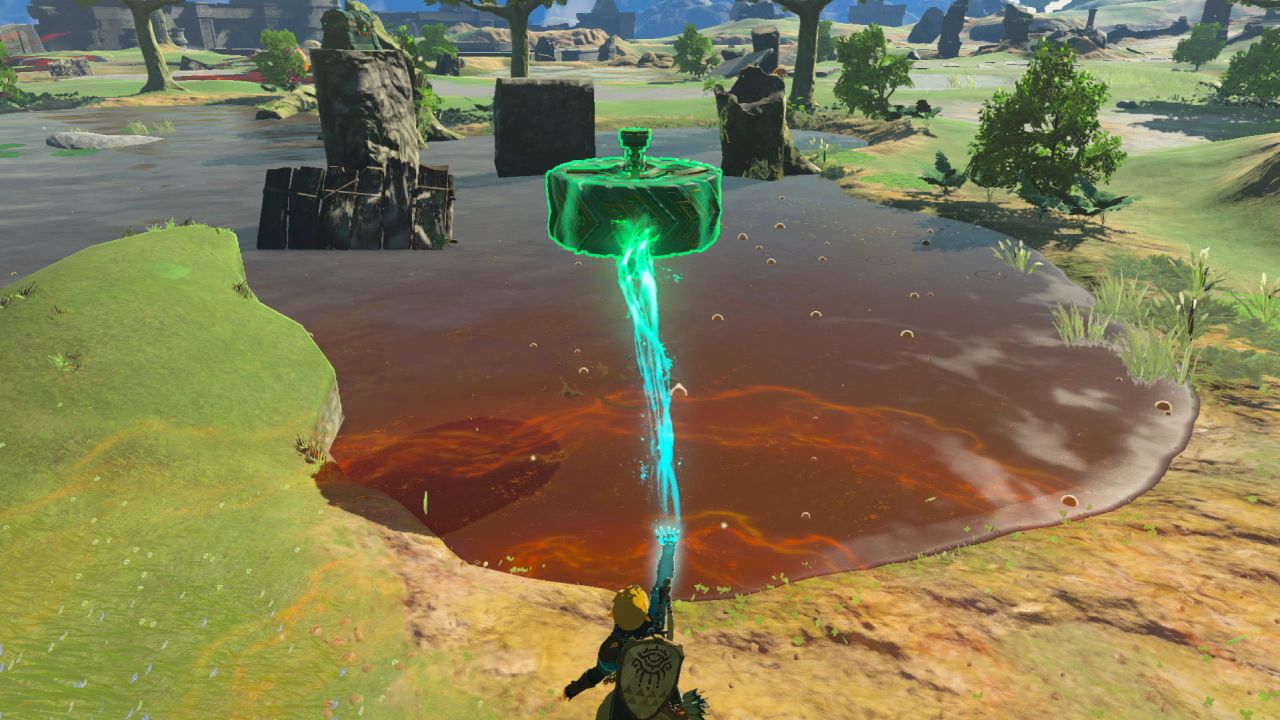
The Zelda formula was not something that really needed to be mixed up, but I can't deny that these new powers improve things. They offer up fresh and exciting ways to tackle shrines or enemy encounters. It often forces you to approach problems from ways you normally wouldn't think of in similar titles. I'm far from the most creative engineer, but every time I crafted a rickety lift or carrying device, I felt proud of myself. Looking online, though, it's fascinating to see how people approach the same challenges and complete them using entirely different methods. Like with Breath of the Wild, the freedom you are given is what makes this such an enchanting and exciting adventure.
Outside of Link's new abilities, the core gameplay of Tears of the Kingdom is not too far removed from Breath of the Wild. As mentioned, weapon degradation is still a thing, as is the stamina meter. If those two things annoyed you in 2017, they'll still bother you here. Combat has retained the same simple, but engaging, engine. Its combination of slashing, dodging and arrow shooting doesn't reinvent the genre, but it works for the title. As a direct sequel, a good portion of the enemies you face are carryovers. There are still countless Bokoblins, Octorocks and Lizalfos for Link to strike down, and they'll still resurrect due to the presence of the Blood Moon. There are different versions of some of these foes, though, such as those infected by Gloom.
New enemies have also popped up in the area. The first ones you'll encounter are Constructs, which were created by the Zonai to protect the land. Unfortunately, even though you are an ally, they'll still target you. Other new creations include the soaring Aerocudas, camouflaged Evermean Trees and Gloom Hands, horrible creatures that will really mess you up if you aren't careful. There are a little over 10 boss battles to be tackled, and they are mostly comprised of new creatures. Some familiar faces do return to challenge Link once again as well. Whether it was due to stumbling upon them ill-prepared or not, I found most of these bosses to be tougher than anticipated. Obviously The Demon King was going to put up a fight, but I wasn't expecting to get walloped by a pesky moth as much as I did.
There are still dozens of shrines to complete and Korok seeds to find. Shrines are minor standalone dungeons that can require you to solve a puzzle or finish a combat encounter. They are great for getting a hold on the new abilities Link has. One early example I came across required me to move a ball to a specialized switch across the shrine. To do this, I had to use all my powers to maneuver it around. Creating a float for it to move across lava, then using recall to manipulate a platform up and down a hill. Upon completing a shrine, you are rewarded with a Light of Blessing. Once you have four of those, you can trade them in at a Goddess Statue for an extra heart or additional stamina. Link still needs to cook food and brew up elixirs. The Sheikah Slate has been removed, though, so the abilities Link had from that device are not featured this time around.
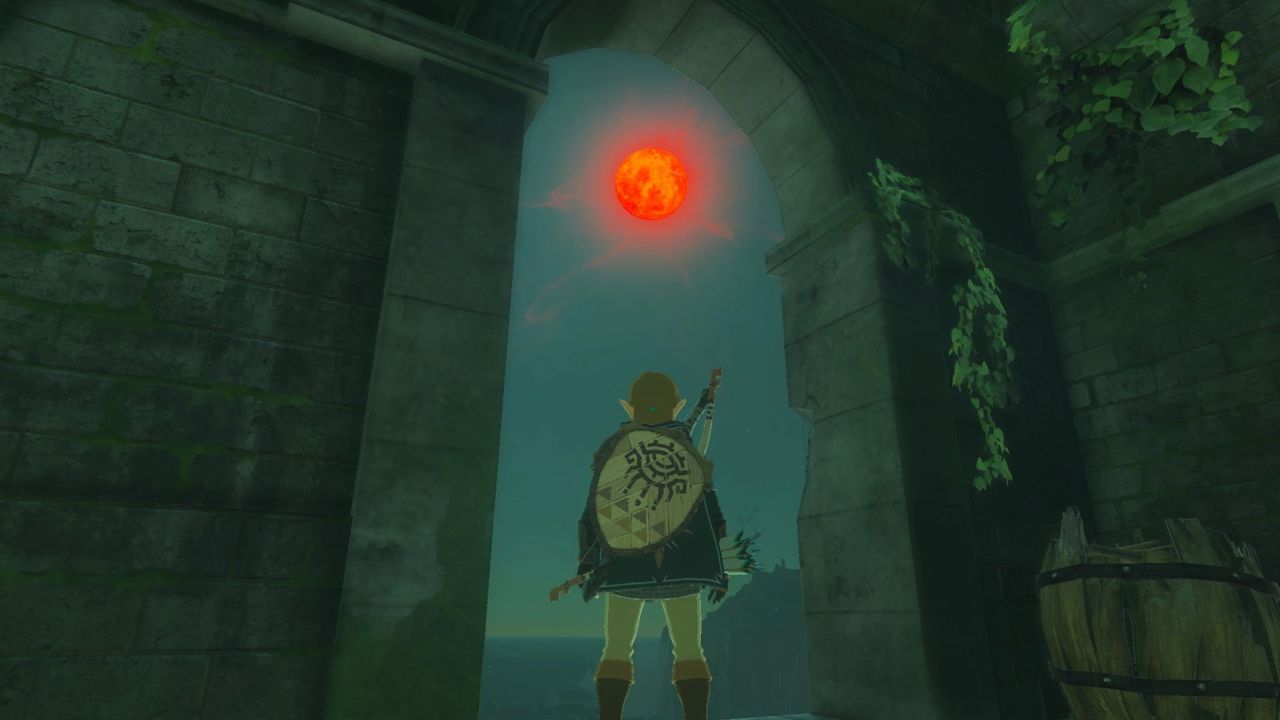
For as familiar as all this still is, though, it's amazing that it never feels boring to play. I have played countless open-world games both before and after Breath of the Wild, but Nintendo remains so far ahead of the competition in the genre it's scary. The countless activities and side-quests to find never feel like busy-work. Just exploring the world and finding secret areas and buried nooks can keep you entertained for hours.
There's plenty for Link to explore as well, as Tears of the Kingdom is essentially broken down into three different worlds. You actually begin your adventure up in the Sky Islands but come back down to Hyrule after the tutorial wraps up. From there, you quickly learn about the Depths, which have become a point of interest for the more intrepid citizens. Each of the three locations feel wildly different from the other, and the ability to move between them easily is a major benefit. You can create vehicles to reach the Sky Islands or use one of several unlockable Skyview Towers to blast your way up to them. For the Depths, you can just paraglide down, but you need to be wary of the Gloom that is housed down there.
Considering how often you can move between these three areas, I was surprised at how well the performance of the title held up. It's no secret that the Switch is getting up there in years, and there have been a fair share of recent releases that have struggled to run properly on it recently. Nintendo knows how to get the most of the console, though, as I really didn't come across too many issues. Some minor lag during rainfall, and the more hectic battles are about the biggest issues I could remember. It's quite the achievement for the system at this point in its lifecycle.
The downside to getting Tears of the Kingdom to run as well as it does is that the visuals are lacking in some regards. Pop-in is very noticeable whether you are playing docked or handheld, and objects can be lacking in detail. On a technical level, it's not great. With that said, the visuals do get saved by the sterling art direction. I love the designs of Link, Zelda and the rest of the main cast. I think they are the best they have looked in the history of the franchise. The differences between the assorted tribes spread across Hyrule are also depicted well in their villages. It goes a long way towards making their lands feel lived-in and unique to their cultures.
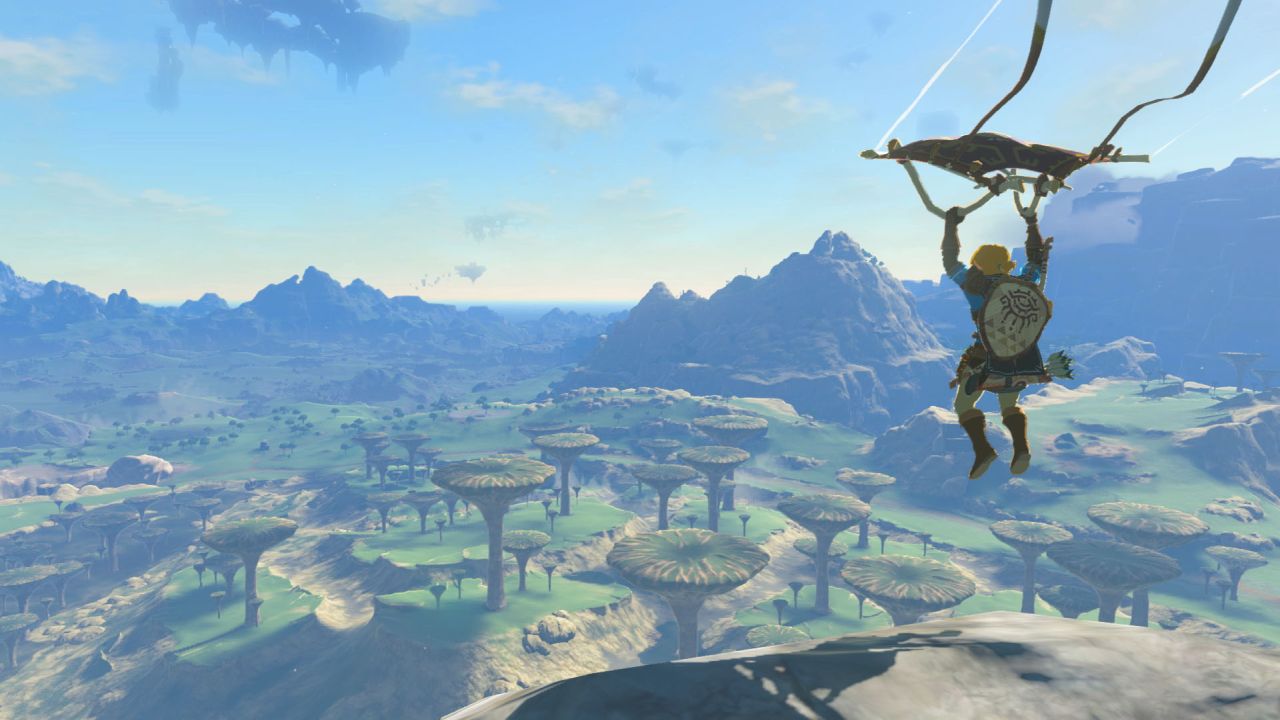
The Legend of Zelda: Tears of the Kingdom may not feel as fresh as Breath of the Wild did upon release, but I do think it's the superior title. The new abilities given to Link help the gameplay feel renewed and exciting throughout his adventures. They open up new possibilities in almost all facets of the gameplay. That freedom combined with the solid framework from its predecessor makes this not just one of the best titles on the Switch, but one of the best games in recent memory. The only downside is that it is stuck on hardware that is capable of running it, but not one that can necessarily benefit it. You can't help but wish it was released on a system with better specs. As this is almost certainly the last we see of Link on the Switch, it's a fantastic way to go out, though.
 Comments
Comments


